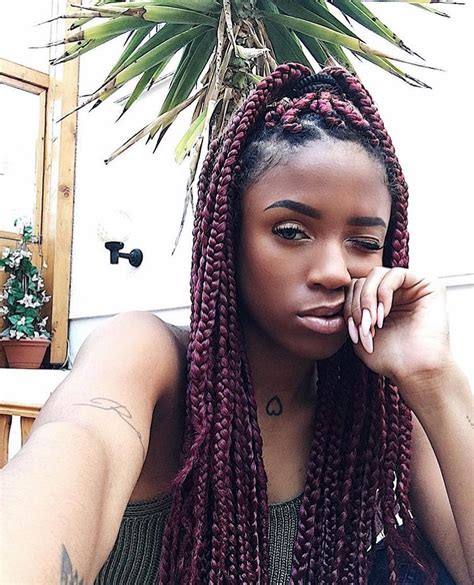Introduction
Braids have adorned the tresses of women for millennia, weaving their way through cultural traditions, fashion trends, and personal expressions. With a history dating back over 5,000 years, these intricate interlacings have evolved into a diverse array of styles that captivate and inspire.

The Cultural Significance of Braids
Braids are not merely decorative accents; they hold profound cultural and social significance in many communities. According to the Anthropologist Museum of Chicago, braids have been used for:
- Identification: Different braiding patterns have historically identified cultural or tribal affiliations.
- Status Symbol: Elaborate braids often denoted social status or marital status.
- Spiritual Practices: Braids have been incorporated into religious ceremonies and rituals to represent unity, protection, and fertility.
- Practicality: Braids protected hair from environmental elements and facilitated labor in various cultures.
Types of Braids: A Comprehensive Guide
The realm of braids is vast and endlessly inventive. Here are some of the most popular and timeless braiding techniques:
1. Three-Strand Braid
The classic braid, also known as the cornrow, is a versatile foundation for countless variations.
2. French Braid
An elegant and intricate braid that appears as if the strands are being woven over and under each other.
3. Dutch Braid
Similar to the French braid, but with the strands being woven under and over, creating a raised effect.
4. Fishtail Braid
A delicate and feminine braid that resembles the shape of a fishtail.
5. Crown Braid
A regal and elaborate braid that forms a crown-like shape around the head.
6. Waterfall Braid
A flowing and romantic braid that creates the illusion of a waterfall cascading down the hair.
7. Box Braids
Large, square-shaped braids that offer a bold and protective style.
8. Dreadlocks
A unique and permanent form of braid that involves sections of hair being twisted and locked together.
Braids in Fashion: From the Catwalk to the Street
Braids have repeatedly been embraced by the fashion industry, gracing the heads of models and celebrities alike. Designers have experimented with innovative techniques and embellishments to create runway-worthy looks that translate into everyday style.
Street Style Trends
Braids have permeated street style, becoming a ubiquitous expression of individuality and creativity. From colorful cornrows to intricate crown braids, women have embraced braids as a powerful accessory that complements their wardrobe and personality.
Braids and Hair Health
While braids can be a beautiful and versatile styling option, it’s important to consider their potential impact on hair health.
Benefits
- Breakage Prevention: Braids can help prevent hair breakage by distributing tension evenly throughout the hair shaft.
- Moisture Retention: Certain braiding techniques can help trap moisture in the hair, promoting hydration.
- Scalp Protection: Braids can shield the scalp from environmental stressors such as sun damage and pollution.
Precautions
- Scalp Tension: Braids that are pulled too tightly can cause scalp tension and damage hair follicles.
- Hair Damage: Prolonged or excessive braiding can weaken hair and lead to breakage.
- Hygiene Concerns: Tight braids can accumulate dirt and product, leading to scalp irritation and infections.
Tips and Tricks for Perfect Braids
Achieving perfect braids requires practice and patience. Here are a few tips to enhance your braiding skills:
- Use a detangling spray to prepare your hair for braiding.
- Section your hair into smaller strands to make braiding easier.
- Braid at night to prevent nighttime hair damage.
- Use clear elastic bands or hair pins to secure your braids without snagging.
- Experiment with different hair accessories to personalize your braids.
Common Mistakes to Avoid
Mistakes can occur during braiding, but understanding and avoiding them can lead to flawless results.
- Skipping detangling: Tangled hair can lead to uneven braids and breakage.
- Braiding too tightly: This can damage hair and scalp follicles.
- Using the wrong hair products: Excessive styling products can weigh down hair and make braids look greasy.
- Over-braiding: Continuous braiding over several days can lead to hair damage and excessive scalp tension.
- Neglecting scalp care: Regular scalp cleansing and moisturizing are essential to prevent irritation and promote healthy hair growth.
Pros and Cons of Braids
Like any hair styling technique, braids have both advantages and disadvantages.
Pros
- Versatile: Braids can be styled in countless ways to suit different face shapes and hair types.
- Protective: Certain braiding techniques can protect hair from heat, styling tools, and environmental damage.
- Time-Saving: Braids can be a quick and easy way to style hair for several days.
- Cost-Effective: Braiding is a relatively inexpensive hair styling option compared to chemical treatments or professional services.
Cons
- Time-Consuming: Intricate braids can be time-consuming to create, especially for beginners.
- Potential for Damage: Braids that are pulled too tightly or maintained for prolonged periods can damage hair.
- Limited Styles: While braids are versatile, they may not be suitable for all occasions or hair types.
- Scalp Irritation: Tight braids can cause scalp tension and irritation.
Innovations in Braiding: Exploring New Possibilities
Contemporary stylists and hair enthusiasts are constantly pushing the boundaries of braiding. Here are some innovative concepts:
- 3D Braiding: Incorporating depth and dimension into braids by manipulating strands in multiple directions.
- Braided Accessories: Using braids to create headbands, jewelry, and other hair accessories.
- Artistic Braiding: Creating intricate braids that resemble patterns, shapes, or works of art.
- Combination Braiding: Blending different braiding techniques to achieve unique and personalized styles.
- Braiding Extensions: Using hair extensions to add length and volume to braids.
Conclusion
Braids are an enduring testament to the creativity and beauty that can be expressed through hair. From their cultural significance to their fashion-forward reinventions, braids have evolved into a versatile and empowering hair styling technique. With endless possibilities for style and customization, braids continue to weave their way into the hearts and hairstyles of women worldwide.
